Executive Summary
Al-Shabaab continues to pose a threat to the stability of Somalia, and the group is linked to at least 55 percent of all recorded incidents in the country since 01 September 2018.
The group operates under and advances a strict interpretation of Islamic law in its areas of influence. Rural communities largely support al-Shabaab due to their ability to provide security and basic social services, providing the militant group with continuous recruitment opportunities.
Al-Shabaab uses guerrilla tactics and asymmetric warfare against its targets, with skirmishes and small arms fire (23%), assassination and murder (11%), and IED detonations (11%) being the group’s preferred modes of attack.
While al-Shabaab conducts operations across Somalia, the group has a tendency to oscillate its focus between the Bay, Banaadir, and Lower Shabelle Regions with relative frequency.
In the Banaadir Region, the group primarily targets the Bondhere, Hodan, Howlwadag, and Warta Nabada districts due to the high foot and vehicle traffic, military and police presence, and government offices operating in these districts.
In the Lower Shabelle Region, Al-Shabaab uses Gandarshe as a staging area to launch attacks against military convoys traveling along the Afgoye-Mogadishu corridor and the Merca-Mogadishu corridor.
There is an increased risk of terrorist activity in the Bari Region as al-Shabaab and the Islamic State of Somalia (ISS) compete for influence and control over the area.
While operations by the African Union Mission to Somalia (AMISOM), the United States Africa Command (AFRICOM), and the Somali National Armed Forces (SNA) have significantly degraded al-Shabaab’s military capabilities, the planned reduction in troops may lead to the resurgence of the militant group in urban areas.Overview
A graph showing the Al-Shabaab operations by type
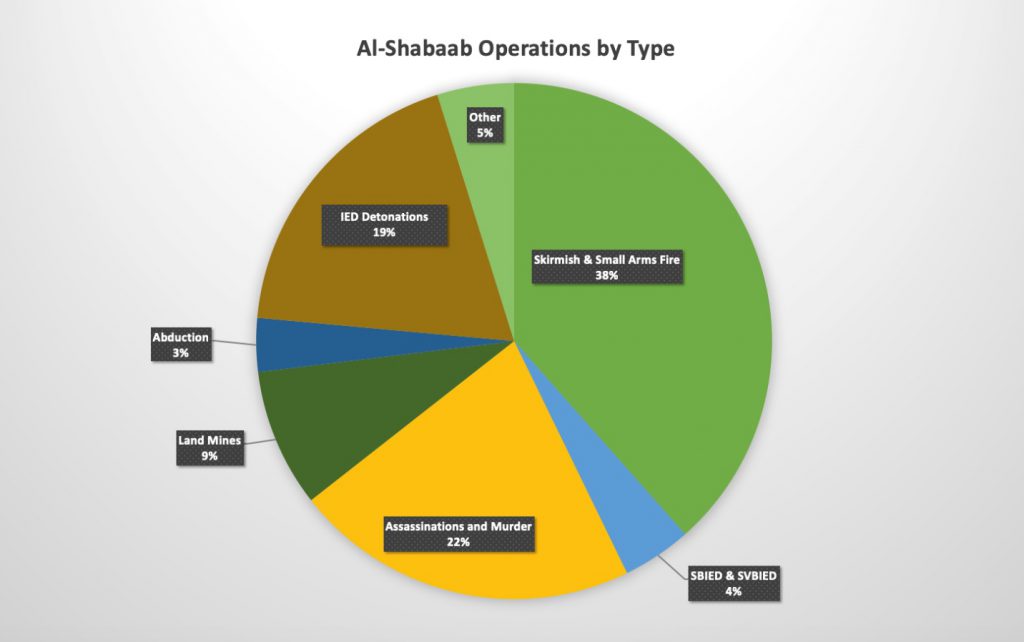
Al-Shabaab is linked to at least 349 of the 626 recorded incidents in Somalia between 01 September 2018 to 17 February 2019. The group largely operates out of rural areas due to the government’s inability to maintain constant security forces in these areas. While al-Shabaab conduct operations across 13 of the 18 administrative regions of Somalia, the group has a tendency to oscillate their focus between the Bay, Banaadir, and Lower Shabelle Regions depending on the month. Al-Shabaab has not conducted any recent operations within the five remaining administrative regions due to their locality within the autonomous region of Somaliland. However, the group uses the Galgala Mountains in the neighbouring Bari Region as a staging area to launch attacks (Ahmed, 2018). Moreover, the Islamic State of Somalia (ISS) also maintains an active presence in the Bari Region. Although the two groups are not ideologically aligned and frequently clash, their presence increases the chance that attacks will be carried out in Somaliland in the near future.
The operations of Al-Shabaab in Somalia broken down by region
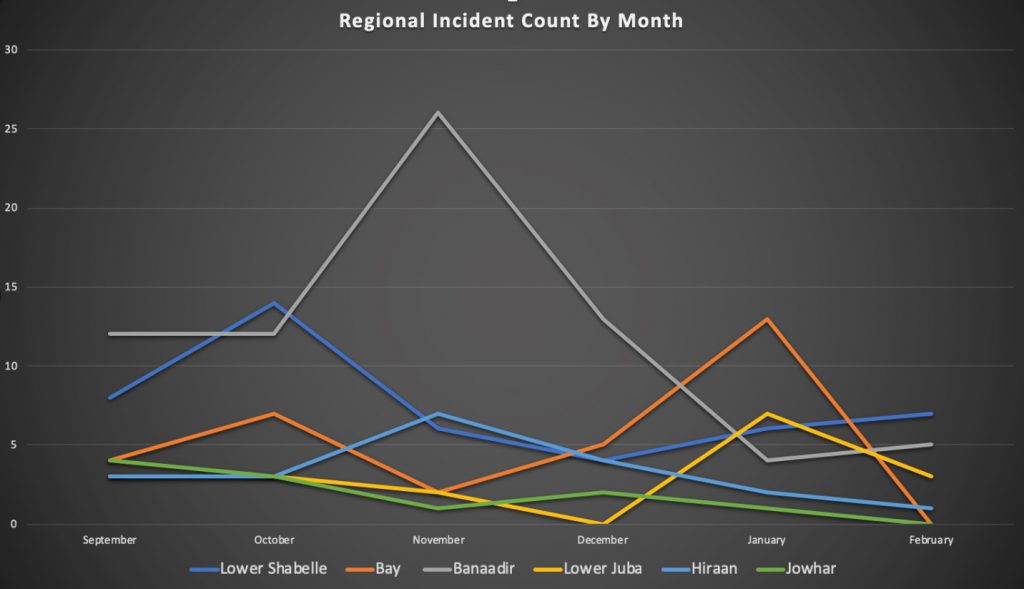
There were at least 80 recorded instances of skirmishes and small arms fire between the militant group and security forces, making it the group’s preferred mode of attack. The group is also responsible for at least 45 instances of assassination and murder. The majority of these incidents targeted clan elders, security forces, politicians, or high-level businessmen. The group has also carried out instances of targeted murders against civilians, although these targets are generally not considered legitimate outside of IED attacks. Murders and assassinations are predominately carried out in Mogadishu in the Banaadir Region.
Al-Shabaab has carried out at least 39 of the 67 improvised explosive device (IED) attacks since 01 September 2018. This category also includes vehicle-borne improvised explosive device (VBIED) and under-vehicle improvised explosive device (UVBIED) attacks. Additionally, the group frequently uses mines to target military convoys. Both IED and mine attacks are primarily conducted across the Banaadir, Bay, Hiraan, Lower Shabelle, and Lower Juba Regions. Al-Shabaab has demonstrated a preference for using IEDs and mines rather than suicide bomber improvised explosive devices (SBIED) and suicide vehicle-borne improvised explosive devices (SVBIED) to carry out attacks. While SBIEDs and SVBIEDs attacks are occasionally conducted, they are rare in frequency. Of the ten SVBIEDs attacks conducted, only seven were detonated at the intended target, and three were part of a coordinated attack. Three of the SVBIED attacks were carried out prematurely after the drivers were stopped at security checkpoints. There have only been two documented cases of SBIED attacks.
Background
Al-Shabaab is an al Qaeda-affiliated jihadist militant group operating within East Africa since 2006. In Somalia, the group works to achieve two primary objectives. First, the group is primarily mobilized and unified by a nationalistic ideology, and it seeks to expel the Western-backed Somali government and the foreign forces operating within broader Somalia. Second, al-Shabaab seeks to establish an Islamic state based on strict interpretations of Shariah law, and the group heavily enforces these laws in its areas of influence. Since 2011, AMISOM, AFRICOM, and SNA operations have significantly reduced the group’s ability to carry out attacks in the country (Home Office, 2017). However, the group is able to garner popular support in rural areas due to its ability to provide security and basic social services. Moreover, the continued presence of foreign forces in the country frequently mobilizes individuals in underserved communities to support the group’s efforts or join its ranks (Wise, 2011). The group is believed to have between 3,000 and 6,000 active members across East Africa (Felter, Masters, & Sergie, 2019).
Al-Shabaab Governance and Law
Al-Shabaab heavily enforces its version of Shariah law in its areas of influence. The group bans alcohol, drugs, music, and movies, and it prohibits men from shaving their beard (Felter, Masters, & Sergie, 2019). In Somalia, al-Shabaab’s prohibition of drugs is problematic due to the widespread availability of khat, a plant deemed a narcotic but commonly chewed throughout the country. Al-Shabaab frequently holds court for those found in violation of these laws. Since 01 September 2018, al-Shabaab has publicly executed three people for rape and three others for the sale of khat, and the group cut off the hands of two people after finding them guilty of theft. However, these are only the incidents that have been reported. Rural areas tend to be marked by clan conflict, and the Somali government is limited in its ability to police and govern these areas. As such, rural populations largely welcome al-Shabaab’s makeshift courts as a means of resolving conflict and crime, and it can be inferred that the group has carried out far more executions and punishments than reported. If a rural population resists al-Shabaab laws, the group frequently abducts tribal elders and youth. These abductions serve two purposes. First, it helps solidify control over resistant clans due to their heavy reliance on elders for conflict resolution and local governance. Second, it provides the group with an opportunity to recruit new members. Since September 2018, the group has abducted approximately 200 people across Somalia.
The militant group funds its operations through taxation, extortion, and informal money transfers. Al-Shabaab sets up makeshift checkpoints to tax both civilian and commercial vehicles traveling within their area of control in exchange for keeping the area safe. It also extorts businesses and business owners, and it has conducted targeted killings of employees of businesses who refuse to comply with their demands. The militant group also leverages Somalia’s large diaspora community to help fund its operations by capitalizing on the country’s vast hawala network, an informal system of money transfers based on trust. However, Al-Shabaab largely funds its operations through the taxes it collects on the sale and transportation of charcoal. In Somalia, charcoal made from the local acacia tree is incredibly valuable due to its popularity abroad. However, the UN has banned all charcoal exports from Somalia in 2012 in an effort to curb terrorist funding in the region. While the group still makes an estimated $7.5 million a year from its taxes on charcoal, the financial stability of the group appears to be threatened (Peltz, 2018). Since the start of 2019, the militant group has seized and set fire to at least nine vehicles transporting charcoal near Afgoye in an effort to regain control over the market.
Regional Operations
Banaadir Region
Al-Shabaab frequently conducts targeted assassinations of political figures, SNA forces, and police officers throughout Mogadishu’s 16 administrative districts. Al-Shabaab has claimed responsibility for at least 18 of the 61 murders and assassinations in the city over the last six months. However, al-Shabaab has demonstrated a reluctance for claiming responsibility for the murder of civilians outside of IED attacks, meaning that the group is likely responsible for a higher number of incidents than reported. The majority of the attacks occur near the Bakaara Market, the city’s largest market in the Howlwadag district. The militant group has also carried out a number of attacks in the Waberi, Hamar Jab-Jab, and Hamar-Weyne districts.
Since September 2018, Al-Shabaab has conducted at least 55 IED attacks in Mogadishu. The group primarily focuses its attacks along the contiguous Maka Al-Mukarama and West Afgoye Road bordering the Bondhere, Hodan, Howlwadag, and Warta Nabada districts. There are higher rates of incidents near the city’s arterial KM 4 and KM 5 Zobe junctions in the Hodan and Howlwadag districts. Al-Shabaab has a history of focusing their attacks on these areas due to the higher presence of vehicle and foot traffic, as well as police presence due to their proximity to the Ministry of Foreign Affairs and Police Criminal Investigation Division Headquarters. In 2017, the militant group conducted its largest VBIED attack on the city at the KM 5 Zobe junction, killing over 500 individuals and injuring at least 300 (Sullivan, 2017). Since 01 September 2018, al-Shabaab has carried out approximately twelve IED attacks in these areas.
Al-Shabaab attacks near KM 4 and KM 5 Zobe junctions in Banaadir
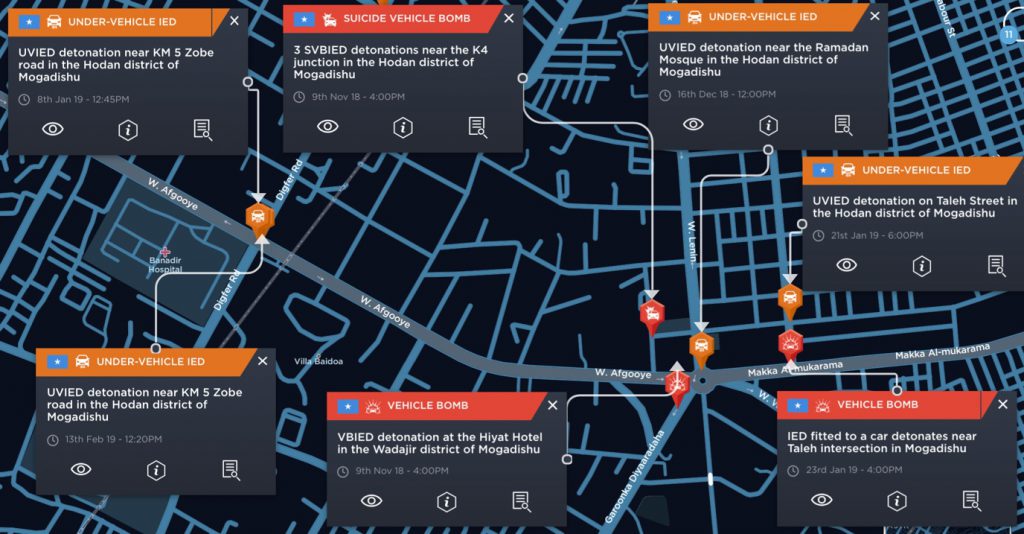
Figure 1: Attacks near the KM 4 and KM 5 Zobe junctions. Credit: Intelligence Fusion 2.0.
In the neighbouring Bondhere and Warta Nabada districts, al-Shabaab has carried out at least 10 IED attacks over the last six months. Al-Shabaab’s focus on this area stems from the presence of two major landmarks: Villa Somalia, the official residence of the President of Somalia, and the Daljirka Dahsoon, or the Tomb of the Unknown Soldier. However, police maintain a large presence in the area, and Al-Shabaab militants have been forced to detonate their VBIEDs early after being stopped at checkpoints.
IED and bomb attacks conducted by Al-Shabbab near Villa Somalia and Daljirka Dahsoon in Banaadir
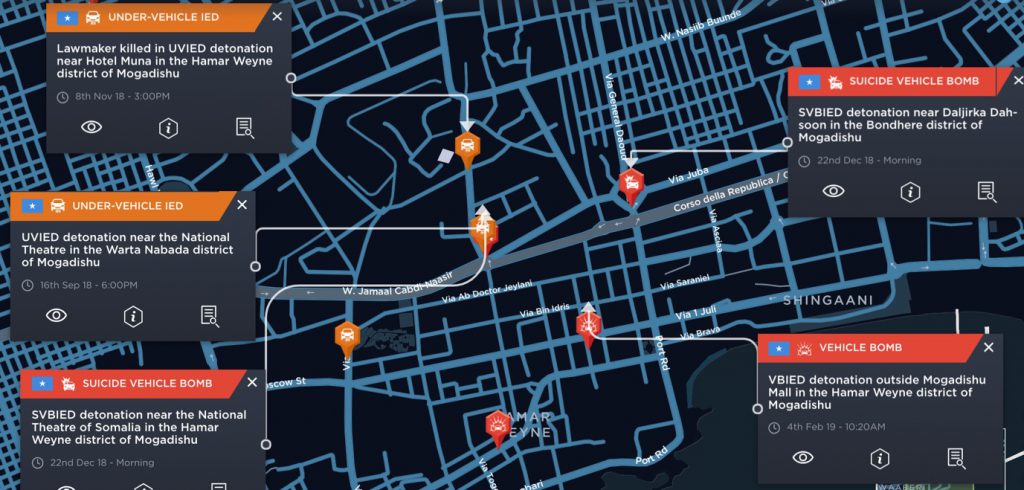
Figure 2: Attacks near Villa Somalia and Daljirka Dahsoon. Credit: Intelligence Fusion 2.0.
Al-Shabaab also tends to focus their attacks on the Ex-Control Afgoye and Ex-Control Balad checkpoints at the Northwest and Northeast parts of the city. Both of these areas are the main entry and exit points into Mogadishu. Police and SNA forces are continuously stationed at these locations, making them an easy and relatively isolated target for attacks.
IED Attacks at ex-control Afgoye and Balcad checkpoints in Banaadir, Somalia
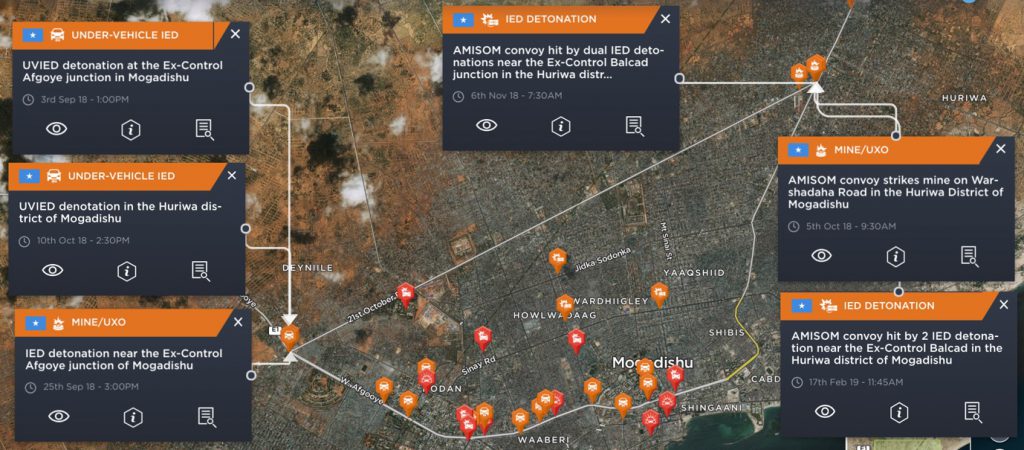
Figure 3: Attacks at Ex-Control Afgoye and Ex-Control Balcad Checkpoints. Credit: Intelligence Fusion 2.0.
Lower Shabelle Region
In the Lower Shabelle Region, Al-Shabaab militants primarily conduct attacks along the Afgoye-Mogadishu and Merca-Mogadishu corridors. The Merca-Mogadishu route is primarily used by SNA and AMISOM forces heading towards Merca, the largest city and capital of the Lower Shabelle Region, and the Lower and Middle Juba Regions (BBC, 2016). The Afgoye-Mogadishu corridor is a primary route used by AMISOM and SNA forces when heading into the Bay, Bakol, and Gedo Regions.
Al-Shabaab continues to maintain a strong presence along the Merca-Mogadishu corridor, and the group has repeatedly seized Merca from security forces over the past several years. There are also AMISOM and SNA bases beyond Merca in nearby Golweyn, Qoryoley, and Shalan Bood. Although some of these bases may serve as temporary stopping points for security forces, military convoys face an increased risk of attack when traveling to these areas. The militant group frequently uses a combination of roadside bombs, land mines, and small arms fire to attack troops and military convoys in the area. Over the last six months, the U.S. Air Force has conducted at least nine drone strikes in the vicinity of Gandarshe, a city north of Merca. The consistency of these strikes indicates that the militant group likely uses Gandarshe as a staging area to launch attacks in Merca and neighbouring cities.
Map depicting where Al-Shabaab have conducted attacks on AMISOM across Somalia in 2018-2019
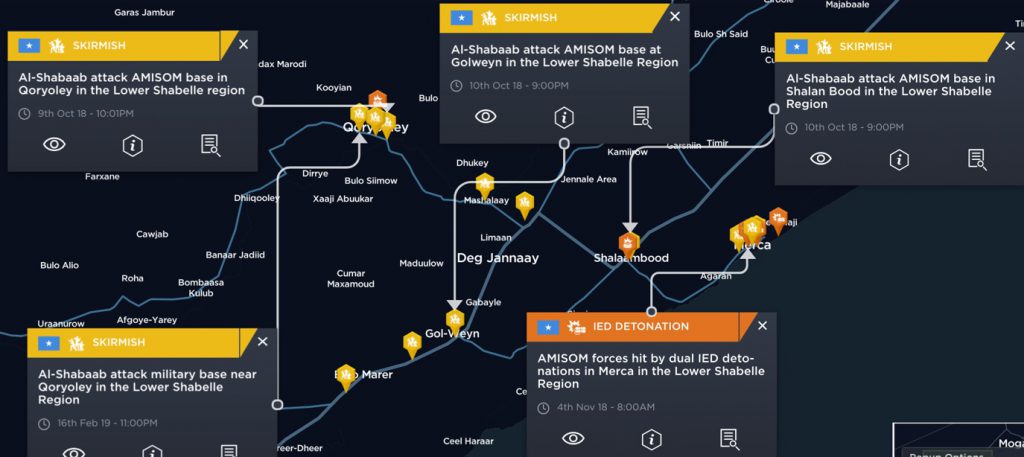
Figure 4: Attacks between Merca, Golweyn, Qoryoley, and Shalan Bood. Credit: Intelligence Fusion 2.0.
Similar to the Merca-Mogadishu corridor, Al-Shabaab frequently targets SNA and AMISOM convoys in the area along the Afgoye-Mogadishu corridor. However, the group places a greater emphasis on the use of land mines and IEDs in this area. Al-Shabaab has also focused its attacks on commercial vehicles transporting charcoal along this corridor.
A map of the series of attacks by Al-Shabaab along the Mogadishu-Afgoye Corridor in 2018 and 2019
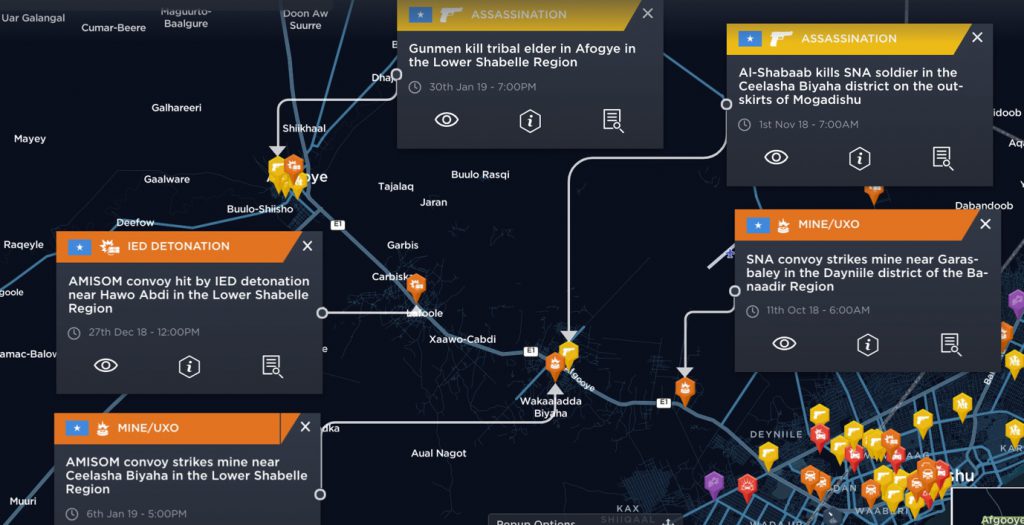
Figure 5: Attacks along the Mogadishu-Afgoye Corridor. Credit: Intelligence Fusion 2.0.
Al-Shabaab & ISIS
The Islamic State has been operating within Somalia since at least 2015 (Maruf, 2018). The group is largely comprised of former al-Shabaab militants and foreign fighters, and it uses the Cal-Miskaad and Galgala Mountain Ranges in the Bari Region as its base of operations. With approximately 200 members, ISS lacks the military capacity and manpower of al-Shabaab (Hassan, 2018). However, the group has demonstrated a willingness to challenge al-Shabaab’s dominance over the country.
ISS has emulated al-Shabaab’s taxation and extortion efforts inside its area of influence, and the group has worked to expand its territorial control to more urban areas in an effort to increase its revenue stream (Guled, 2018; Maruf, 2018). But these initiatives have threatened al-Shabaab’s own operations. In December 2018, al-Shabaab released a statement calling for the eradication of ISS from Somalia, and the militant group mobilized its forces to the Bari Region in an effort to expel ISS from the area. There have been at least five reported skirmishes between the two militant groups since 01 December 2018.
It is unlikely that ISS will be able match al-Shabaab’s capabilities and influence in the near future. However, if the group can successfully enhance its revenue stream, it will heighten the threat ISS poses to major urban centres across the Puntland State. It also increases the likelihood that the Bari Region will see an uptick in al-Shabaab activities as the group works to degrade ISS capabilities and operations.
A map showing the locations across Bari, Somalia where clashes have occurred between Al-Shabaab and Islamic State
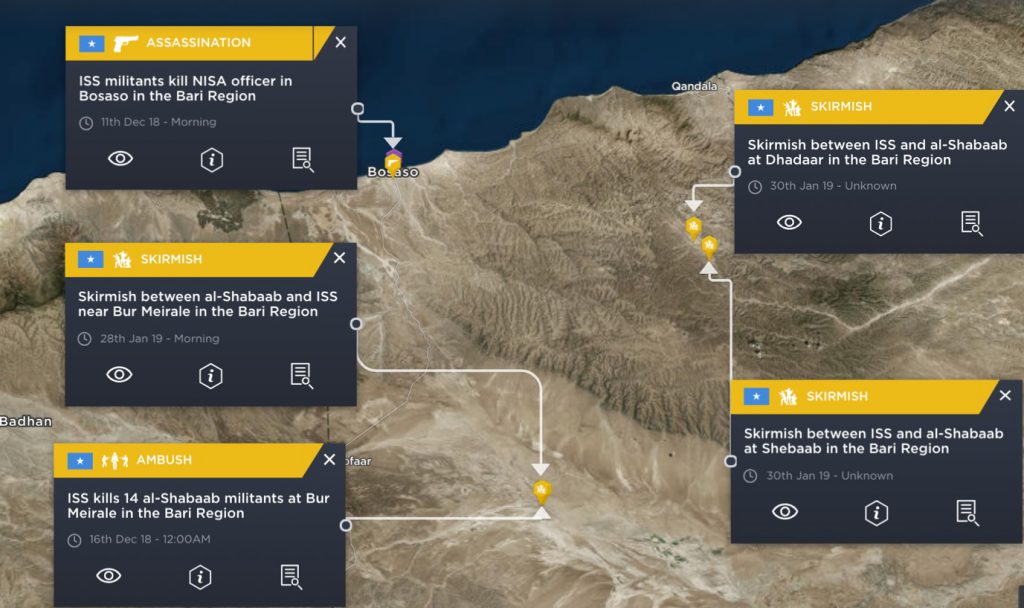
Figure 6: Al-Shabaab and ISS-Related Incidents in the Bari Region. Credit: Intelligence Fusion 2.0.
AFRICOM, AMISOM, & SNA Forces
Since 01 September 2018, AFRICOM and AMISOM have conducted at least 60 precision airstrikes against al-Shabaab. The majority of the strikes have occurred in the Lower Shabelle, Bay, Lower Juba, Middle Juba, and Mudug Regions. Under President Donald Trump, the U.S. Air Force has dramatically increased its use of drone strikes against al-Shabaab (Mitchell, 2019). The majority of these strikes are used to support counterterrorism operations or provide protection for SNA forces. Additionally, the Kenya Defence Force (KDF) has taken an active role is conducting strikes across the Lower Juba Region due to its proximity to the Kenya-Somalia border.
AMISOM is currently preparing to hand over security operations to SNA forces in 2020 (Meseret, 2016). It recently announced that it will close multiple forward operating bases in Somalia and reduce troops by 1,000 at the end of February 2019. AFRICOM has also announced it would reduce troops across Africa by nearly 10 percent (Mitchell, 2019). While AFRICOM insists that this reduction will not have an impact on operational efficiency, the uptick in airstrikes across Somalia suggests that the U.S. may be searching for an exit strategy from the country. By conducting continuous airstrikes, the U.S. may be seeking to dramatically weaken al-Shabaab so that SNA forces are better prepared to manage the country’s security environment. Given AMISOM’s upcoming withdraw from the country, a weakened al-Shabaab would provide both AMISOM and AFRICOM with the perfect exit strategy. However, al-Shabaab is able to garner continued support for its operations due to the presence of foreign forces within Somalia. The continuous use of drone strikes will likely enhance the group’s appeal, creating an overall weaker security environment for SNA forces in the short-to-medium term.
